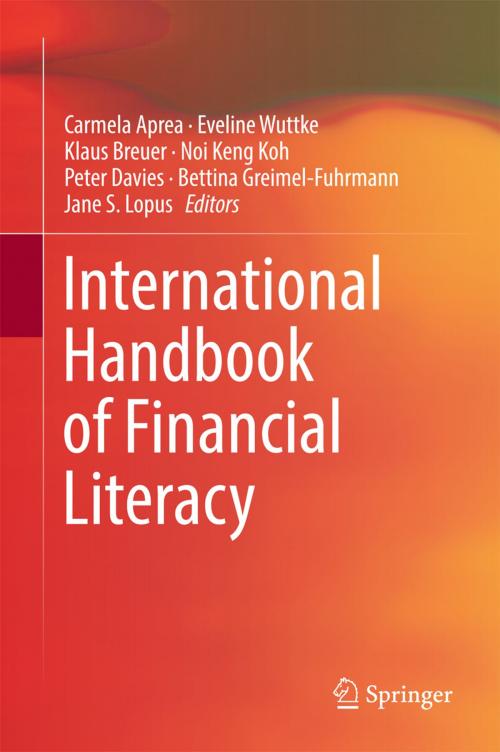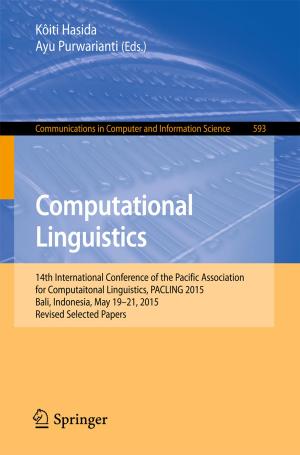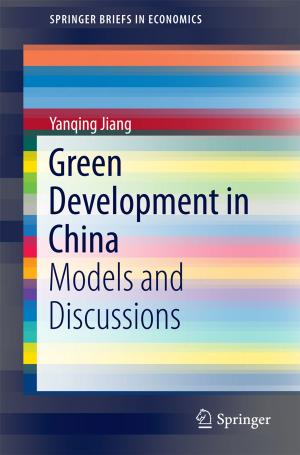International Handbook of Financial Literacy
Nonfiction, Reference & Language, Education & Teaching, Educational Theory, Educational Reform, Higher Education, Social & Cultural Studies, Political Science| Author: | ISBN: | 9789811003608 | |
| Publisher: | Springer Singapore | Publication: | March 24, 2016 |
| Imprint: | Springer | Language: | English |
| Author: | |
| ISBN: | 9789811003608 |
| Publisher: | Springer Singapore |
| Publication: | March 24, 2016 |
| Imprint: | Springer |
| Language: | English |
This Handbook presents in-depth research conducted on a myriad of issues within the field of financial literacy. Split into six sections, it starts by presenting prevalent conceptions of financial literacy before covering financial literacy in the policy context, the state and development of financial literacy within different countries, issues of assessment and evaluation of financial literacy, approaches to teaching financial literacy, and teacher training and teacher education in financial literacy. In doing so, it provides precise definitions of the construct of financial literacy and elaborates on the state and recent developments of financial literacy around the world, to show ways of measuring and fostering financial literacy and to give hints towards necessary and successful teacher trainings. The book also embraces the diversity in the field by revealing contrasting and conflicting views that cannot be bridged, while at the same time making a contribution by re-joining existing materials in one volume which can be used in academic discourse, in research-workshops, in university lectures and in the definition of program initiatives within the wider field of financial literacy. It allows for a landscape of financial literacy to be depicted which would foster the implementation of learning opportunities for human beings for sake of well-being within financial living-conditions. The Handbook is useful to academics and students of the topic, professionals in the sector of investment and banking, and for every person responsible for managing his or her financial affairs in everyday life.
This Handbook presents in-depth research conducted on a myriad of issues within the field of financial literacy. Split into six sections, it starts by presenting prevalent conceptions of financial literacy before covering financial literacy in the policy context, the state and development of financial literacy within different countries, issues of assessment and evaluation of financial literacy, approaches to teaching financial literacy, and teacher training and teacher education in financial literacy. In doing so, it provides precise definitions of the construct of financial literacy and elaborates on the state and recent developments of financial literacy around the world, to show ways of measuring and fostering financial literacy and to give hints towards necessary and successful teacher trainings. The book also embraces the diversity in the field by revealing contrasting and conflicting views that cannot be bridged, while at the same time making a contribution by re-joining existing materials in one volume which can be used in academic discourse, in research-workshops, in university lectures and in the definition of program initiatives within the wider field of financial literacy. It allows for a landscape of financial literacy to be depicted which would foster the implementation of learning opportunities for human beings for sake of well-being within financial living-conditions. The Handbook is useful to academics and students of the topic, professionals in the sector of investment and banking, and for every person responsible for managing his or her financial affairs in everyday life.















